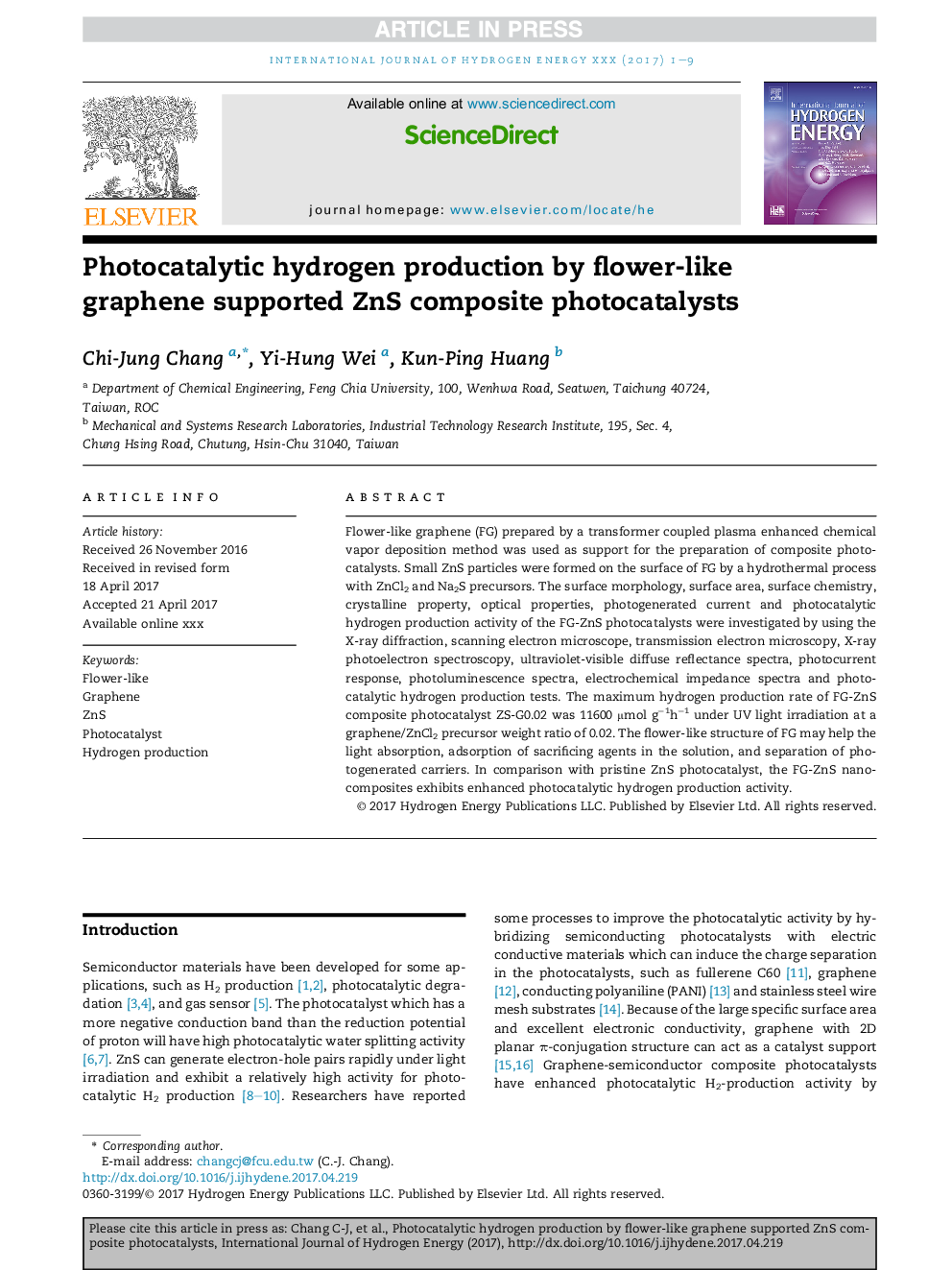| Article ID | Journal | Published Year | Pages | File Type |
|---|---|---|---|---|
| 5145527 | International Journal of Hydrogen Energy | 2017 | 9 Pages |
Abstract
Flower-like graphene (FG) prepared by a transformer coupled plasma enhanced chemical vapor deposition method was used as support for the preparation of composite photocatalysts. Small ZnS particles were formed on the surface of FG by a hydrothermal process with ZnCl2 and Na2S precursors. The surface morphology, surface area, surface chemistry, crystalline property, optical properties, photogenerated current and photocatalytic hydrogen production activity of the FG-ZnS photocatalysts were investigated by using the X-ray diffraction, scanning electron microscope, transmission electron microscopy, X-ray photoelectron spectroscopy, ultraviolet-visible diffuse reflectance spectra, photocurrent response, photoluminescence spectra, electrochemical impedance spectra and photocatalytic hydrogen production tests. The maximum hydrogen production rate of FG-ZnS composite photocatalyst ZS-G0.02 was 11600 μmol gâ1hâ1 under UV light irradiation at a graphene/ZnCl2 precursor weight ratio of 0.02. The flower-like structure of FG may help the light absorption, adsorption of sacrificing agents in the solution, and separation of photogenerated carriers. In comparison with pristine ZnS photocatalyst, the FG-ZnS nanocomposites exhibits enhanced photocatalytic hydrogen production activity.
Related Topics
Physical Sciences and Engineering
Chemistry
Electrochemistry
Authors
Chi-Jung Chang, Yi-Hung Wei, Kun-Ping Huang,
